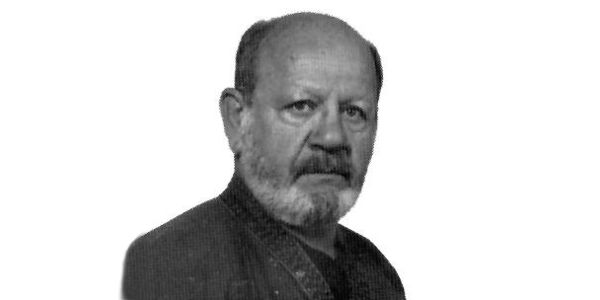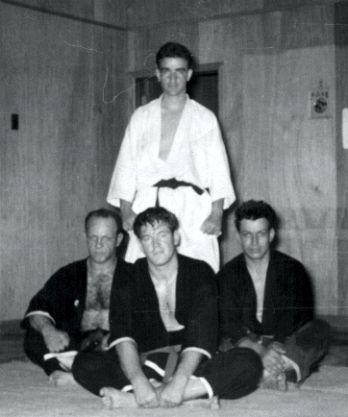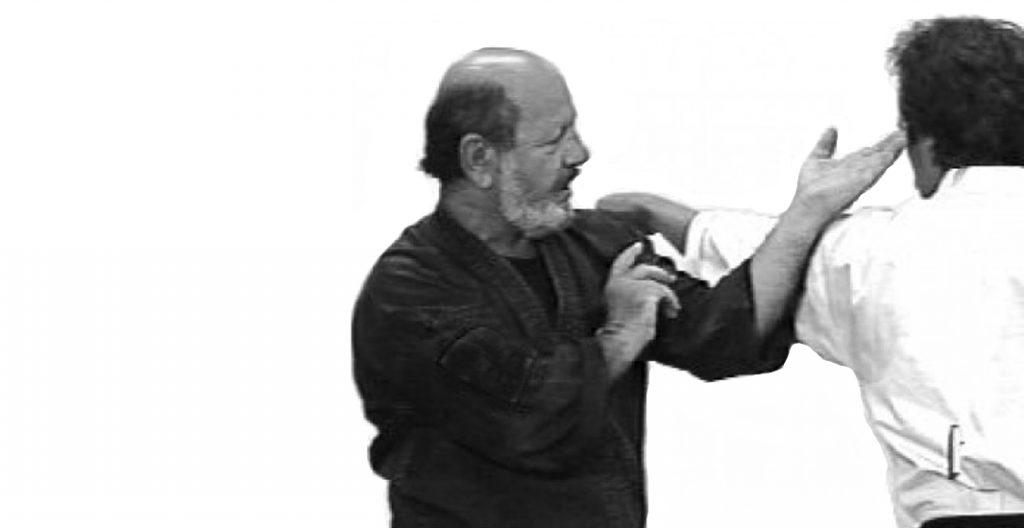 Nick Cerio was born on July 9, 1936 in Boston, Massachusetts and grew up in Federal Hill, Providence, Rhode Island. He became Professor Nick Cerio, world-renowned martial artist and founder of Nick Cerio’s Kenpo.
Nick Cerio was born on July 9, 1936 in Boston, Massachusetts and grew up in Federal Hill, Providence, Rhode Island. He became Professor Nick Cerio, world-renowned martial artist and founder of Nick Cerio’s Kenpo.
Before young Nick was a teenager his family moved to Providence, Rhode Island (Federal Hill district). During this time Providence was a “rough and tumble” locale, and Nick Cerio had his share of fights. As a teenager Professor Cerio took up boxing at the Federal Hill House. Boxing was a way for him to channel and use his youthful aggression other than fighting in the streets. It introduced him to the more intellectual and technical side of combat, like theories of angles and continuous flow of motion. Professor Cerio loved boxing and when he joined the United States Air Force in the mid 1950’s he was quite successful in the lightweight division.
In 1958, after an Honorable Discharge, Professor Nick Cerio began training in Judo under George McCabe at the YMCA back in Providence, Rhode Island. After three years of study Professor Cerio decided to seek out an art with stronger combat emphasis, and in 1961 he began studying Tae Kwon Do under Ted Olson.

About a year later, in 1962 Professor Nick Cerio was introduced to Sensei George Pesare and the art of Karazenpo Go Shinjutsu (Kenpo). Sensei Pesare showed the New England states the art of Kenpo two years prior to taking Professor Cerio as a student. Like his earlier years in boxing Professor Cerio totally immersed himself in this new art. Professor Cerio was a constant on the tournament circuit competing at the Black Belt level, even though he was still a Brown Belt. Through these tournaments Professor Cerio Built his network of connections some of who would later become instructors to him. In 1966 Sensei Pesare awarded Professor Cerio his Shodan (1st degree of Black Belt) in Kenpo. This was also the year that Professor Cerio opened his first school and called it Cerio’s Academy of Martial Arts. The acronym of CAMA was used by Professor Cerio on his license plates throughout his life.
In 1966 Professor Cerio moved on from Sensei Pesare to continue his martial arts journey. During his many tournament competitions Professor Cerio met a referee and Kenpo master named Edmund Parker, the “father of American Kenpo.” Their relationship began with informal conversations on Kenpo history, and each showing the other different techniques they learned and developed. It was through these conversations that Professor Cerio learned of Professor William Kwai Sun Chow of Hawaii. Upon Professor Cerio’s request Master Parker wrote a letter of introduction for him to meet Professor Chow. Depending on who is telling the story, it is said that Professor Cerio first studied with William Chun, Professor Chow’s top student at the time, before he was allowed to learn from Professor Chow. This was the traditional manner in which a student seeking a teacher. According to information research, Professor Cerio was awarded a Shodan from both Professor Chow and Master Chun. According to some information the certificate from Professor Chow is dated August 1966, and the one from Master Chun is dated August 1967. Conflicting research has been found stating this later certificate was actually presented by Professor Chow; either way a Shodan from Professor Chow was given to Professor Cerio. The story continues that Professor Cerio was granted the privilege of studying with Professor Chow permanently in 1967.
Over the next four years Professor Cerio visited Professor Chow several times in Hawaii. Being a very traditional instructor Professor Chow’s training methods were often times quite trying. Professor Cerio told stories of horse stance training with full force punches up to 500 times or more, the “more” coming from deviations from a proper low horse stance. Seeing Professor Cerio’s skill and potential, Professor Chow told him that he should develop his own system of Kenpo for mainland America. Shortly after that in December of 1971 Professor Chow awarded Professor Cerio his Godan (5th degree Black Belt). This was, unfortunately, to be Professor Cerio’s final Hawaii training session with Professor Chow.
During the years Professor Cerio spent traveling to Hawaii for training he also trained on the mainland with others. These instructors were also people he met through the tournament circuit. One of these men was James Benko who was a Hakkoryu Jiujutsu practitioner. Professor Cerio received a brown belt through Mr. Benko and would continue on later to earn his Shodan through Professor Larry Garron. Another tournament contact was Master Ernie Lieb, a Chung Do Kwan practitioner, who actually fought with Professor Cerio in a tournament. The story has it that Master Lieb was awarded the victory in the fight, and afterwards approached Professor Cerio to congratulate him, as any good sportsman and respectful martial artist would. He then showed Professor Cerio his bruised ribs while commenting, “We know who won this fight”. Moved by Master Lieb’s skill in the ring and humility on the sidelines Professor Cerio asked to be and was accepted as a student of Master Lieb. It was through Master Lieb that he met yet another instructor, Master Tadashi Yamashita, a Shorin Ryu practitioner.
Through the years Professor Cerio had continued his studies with Master Ed Parker and was awarded his Sandan (3rd degree Black Belt) in 1969. This rank was sanctioned by the International Kenpo Karate Association. It was also sanctioned by the American Karate Association, which listed both Master Parker and Master Lieb among the Directors.
It was at this time that Professor Cerio centered his training with Master Yamashita. It was though him that Professor Cerio learned his skills in Okinawan techniques and weapons. Master Yamashita awarded Professor Cerio his Yondan (4th degree Black Belt) in 1970. In 1973 while at a seminar with Master Yamashita and Master Lieb, Professor Cerio was surprise tested for his Godan (5th degree Black Belt). Given in September 1973, this rank was sanctioned by the Midwest Karate Federation.
The next instructor for Professor Cerio was met in a local Chinese restaurant after training and teaching was done one day. Master Gan Fong Chin, a Sil Lum Kung Fu practitioner is the man who awarded Professor Cerio his Hachidan (8th degree Black Belt) in August 1973. It was at this time that Master Chin also awarded Professor Cerio with the title of Sifu (teacher), the first of only three such titles Master Chin ever presented. This is when Professor Cerio started wearing the white and red colored belt he was often seen in.
Finally in 1974 Professor Cerio named his new system Nick Cerio’s Kenpo. Master Ed Parker had continually been advising and coaching Professor Cerio on the methodology of creating and organizing his own system as Professor Chow had recommended years before. Professor Cerio’s system, based on Chinese, Okinowan, Japanese and Korean arts, would continually evolve through modifications and improvements throughout his lifetime.
In March of 1983 Master Parker awarded Professor Cerio his Kudan (9th degree Black Belt) in Kenpo. At this time Professor Cerio also was presented the title of Shihan. Professor Cerio had not learned the entire curriculum of American Kenpo so this rank was awarded simply for Kenpo and not in the American Kenpo of Master Parker.
On April 22, 1989 the Kokonryu Bujutsu Renmei Association, personified by Professor Thomas H. Burdine, presented Professor Cerio with the title of Professor. Later that sameNick Cerio Inside Kung Fu Magazine year on September 23rd Professor Burdine, representing the World Soke Council, presented Professor Cerio with the title of Kaichi Yudansha Shihan. This in effect placed Professor Cerio in the elite company of those “Above Ranking”. Upon reviewing Professor Cerio’s ability, knowledge and credentials, the World Soke Council found him worthy of being considered ranked beyond the Dan ranking system. This certification also gave Professor Cerio the authority to continue his system ranking himself at whatever rank he deemed appropriate, using whatever ranking system also deemed appropriate by himself. Going back to his roots in Kenpo, and based on the traditional 10 Dan Kenpo ranking system, Professor Cerio presented himself the title of Jundan (10th degree Black Belt) in Nick Cerio’s Kenpo. In July 1997, Inside Kung Fu Magazine printed an article on the career of Professor Cerio that details the many celebrities and prominent martial artists that Professor Cerio has worked with throughout his life.
October 7, 1998 Professor Cerio passed away in his home territory of New England. His contributions to the martial arts world through his art and his students still affect the world. Professor Cerio awarded the founder of United Studios of Self Defense, Charles Mattera, his Hachidan. This was to be the highest rank Professor Cerio ever promoted anyone to. Nick Cerio’s Kenpo schools, which had numbered close to 70 while Professor Cerio was in charge, quickly diminished to less than one dozen upon his death. This decline can be attributed to political in fighting among the senior ranking members of the organization. Professor Cerio was one of those rare people destined to effect change in the world on a truly grand scale. Being the person he was Professor Cerio lived up to his destiny and the ripples of his existence will reverberate for quite a long time.

Nick Cerio Has Passed Away
Professor Nick Cerio Obituary
The Providence Journal
Friday October 9, 1998
Nicholas R. “Nick” Cerio, 62, of Windmere Way, a world-renowned martial arts professor and the founder of Nick Cerio’s Kenpo, died Wednesday at Kent County Memorial Hospital.
Born in Boston, he was a son of Margaret (Russo) Clouse of Providence and the Late Nicholas Cerio and the stepson of Alice Cerio of North Providence. He lived in Providence most of his life.
Grand Master Cerio, a 10th degree Black Belt, was one of America’s founders and foremost innovators of kenpo karate, and an internationally recognized martial-arts figure. In 1968, he founded Nick Cerio’s Kenpo, and in 1988 the Nick Cerio’s International Martial Arts Association (NCIMAA), which united many styles within the martial arts. In 1989, his system of martial arts was officially recognized and awarded above ranking status, and he was give the title of professor by the World Council of Soke’s.
He built up an organization of more than 65 Nick Cerio Kenpo and associate schools in the United States, Canada, Europe and South Africa. He produced many martial arts champions throughout his 40 years of training and was inducted into numerous halls of fame worldwide.
He was the author of several books, teaching guides, videotapes and the NCIMAA magazine. A martial arts community spokesman said, “Professor Cerio will live forever in all of us who he has touched, and never shall be forgotten”.
He was an Air Force veteran.
Besides his mother and stepmother, he leaves a brother, Frank Cerio of Johnston; four sisters, Florence Armenti of Providence, Dolores Ross and Jacqueline Ciano, both of Johnston, and Joni O’Rielly of Glocester; a stepson, William Ambrosia, and a companion, Michaela Collins, both of Warwick; a stepdaughter, Maria Kowalski in New Hampshire; and three step-grandchildren. He was the brother of the late Margaret “Peggy” Montini.
The funeral was held at Thomas & Walter Quinn Funeral Home, 2435 Warwick Ave, Warwick, RI 02889, with a Mass of Christian Burial at St. Kevin Church, 333 Sandy Ln, Warwick, RI 02889. Burial was in Highland Memorial Park, Johnston.





